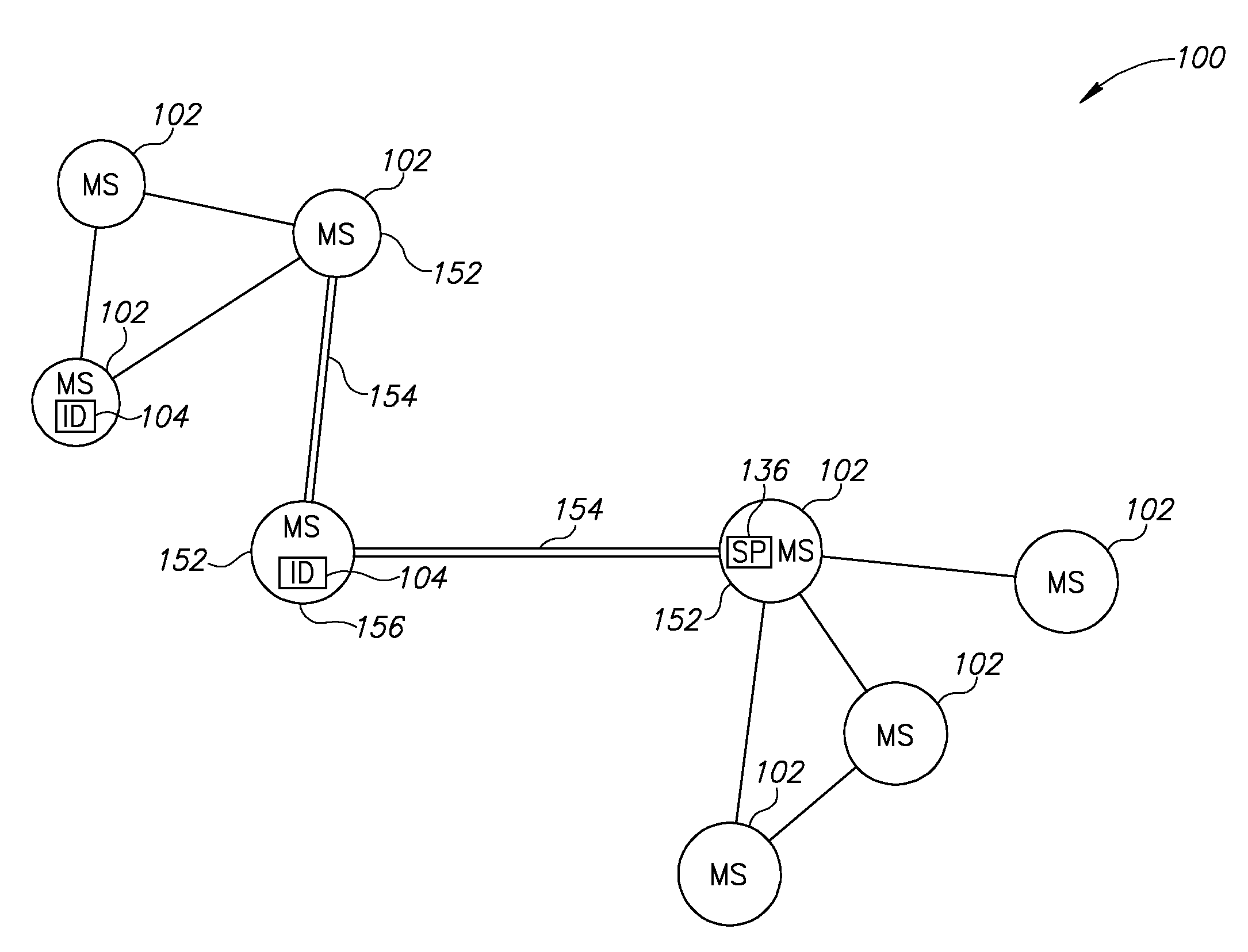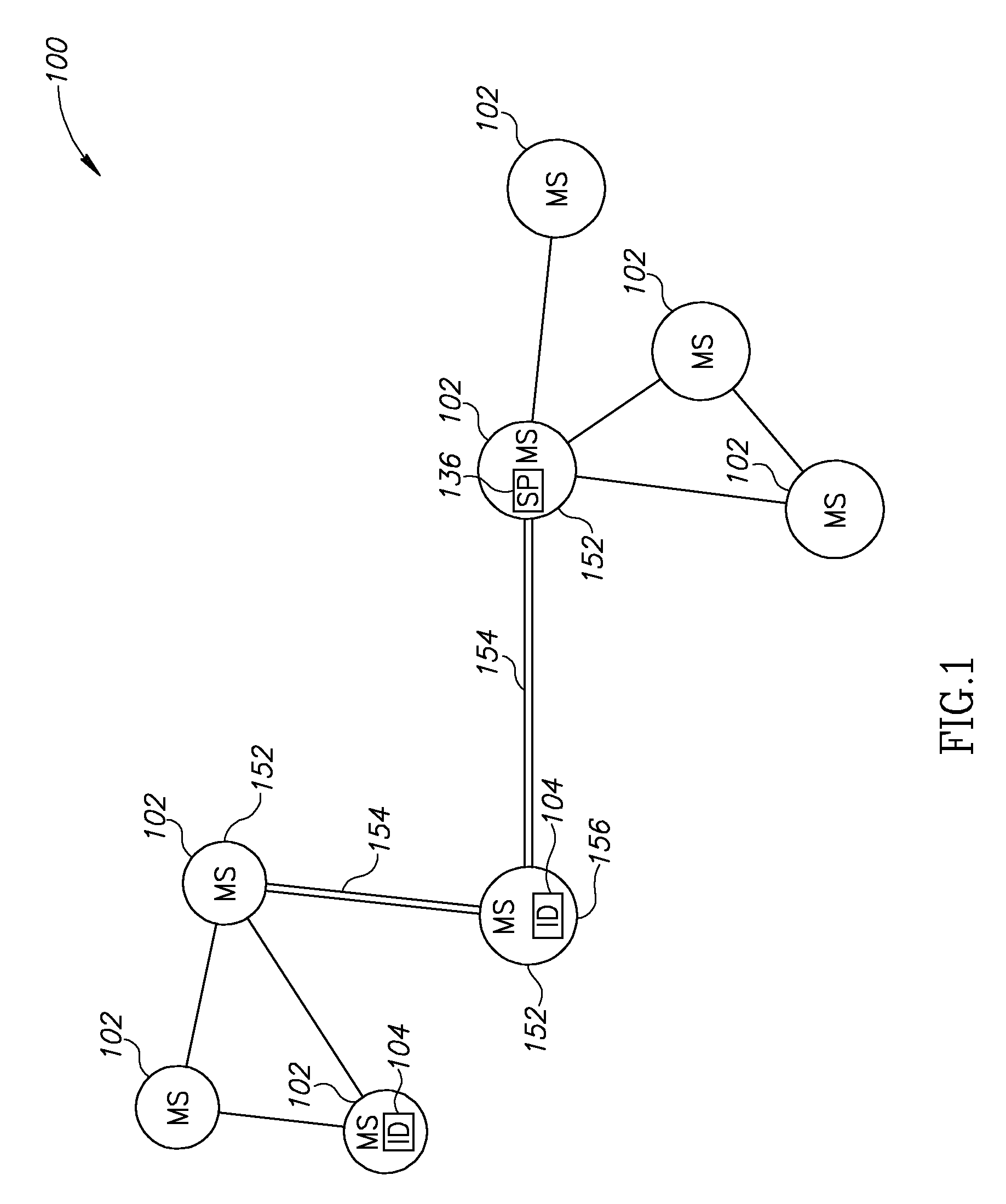Real Time Peer to Peer Network
a peer-to-peer network and peer-to-peer technology, applied in the field of communication, can solve the problems of wasting bandwidth, relying on base stations and infrastructure communication links between base stations, and not generally desired, and achieves the effect of reducing the cost of battery power consumption of mobile stations, reducing the cost of battery power consumption, and reducing the cost of operation
- Summary
- Abstract
- Description
- Claims
- Application Information
AI Technical Summary
Benefits of technology
Problems solved by technology
Method used
Image
Examples
Embodiment Construction
[0115]FIG. 1 is a schematic illustration of a peer to peer network 100, in accordance with an exemplary embodiment of the invention. Network 100 is formed of a plurality of mobile stations (MS) 102, which optionally include microphones and speakers for real time communication of speech. Alternatively or additionally, mobile stations 102 include input pads and / or displays for transmission of text messages. Further alternatively or additionally, mobile stations 102 have any other input and / or output interfaces known for wireless transceivers, such as cellular telephones, walkie-talkies and personal communicators.
[0116]Optionally, mobile stations 102 are all identical units with same processing power. Alternatively, mobile stations 102 may have different characteristics, although the management of transmissions within network 100 is performed, for simplicity, without relation to the differences between the mobile stations. Further alternatively, the differences between the mobile stati...
PUM
 Login to View More
Login to View More Abstract
Description
Claims
Application Information
 Login to View More
Login to View More - R&D
- Intellectual Property
- Life Sciences
- Materials
- Tech Scout
- Unparalleled Data Quality
- Higher Quality Content
- 60% Fewer Hallucinations
Browse by: Latest US Patents, China's latest patents, Technical Efficacy Thesaurus, Application Domain, Technology Topic, Popular Technical Reports.
© 2025 PatSnap. All rights reserved.Legal|Privacy policy|Modern Slavery Act Transparency Statement|Sitemap|About US| Contact US: help@patsnap.com



